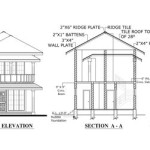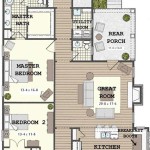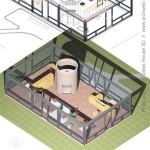Build Your Own Floor Plans: Essential Aspects
Designing the perfect home is a dream many cherish, and crafting your own floor plans is a crucial step in bringing that dream to life. While it may seem daunting at first, breaking down the process into essential aspects can make it manageable and enjoyable.
1. Determine Your Needs and Lifestyle: Start by considering your lifestyle and requirements. How many bedrooms and bathrooms do you need? What kind of living spaces do you envision? Do you want an open floor plan or separate rooms? Clearly defining your needs will guide your design choices.
2. Study Building Codes and Regulations: Before you begin designing, familiarize yourself with local building codes and regulations. These guidelines ensure your plans comply with safety and building standards. Consult with a professional if you have doubts or require guidance.
3. Select a Floor Plan Software: Various software options are available to help you create floor plans. Choose one that aligns with your skill level and budget. Experiment with different software to find one that suits your needs.
4. Plan for Room Sizes and Placement: Determine the dimensions of each room based on your requirements. Consider how rooms flow into each other and how furniture will fit. Ensure proper natural light and ventilation throughout your design.
5. Incorporate Essential Elements: Include vital spaces such as a kitchen, living room, bathrooms, and bedrooms in your plan. Remember to consider storage, closets, and utility areas. Plan for windows, doors, and staircases, if necessary.
6. Utilize Space-Saving Techniques: Maximize space with creative solutions like built-in storage, multi-purpose areas, and clever room configurations. These techniques help create a spacious and functional living environment.
7. Seek Professional Advice (Optional): If you encounter challenges or want expert guidance, consider consulting with an architect or interior designer. They can provide valuable insights, ensure building code compliance, and elevate your design.
Designing your own floor plans can be a rewarding experience. By considering these essential aspects, you can create a home that meets your specific needs, maximizes space, and reflects your personal style and vision.

House Plans How To Design Your Home Plan

House Plans How To Design Your Home Plan

Floor Plan Creator And Designer Free Easy App

Create Floor Plan

Design Your Own Home House Designing Homes

House Plans How To Design Your Home Plan

Easy To Build Houses And Floor Plans Houseplans Blog Com

Make Your Own Blueprint How To Draw Floor Plans

Floor Plans Learn How To Design And Plan

House Plans How To Design Your Home Plan








